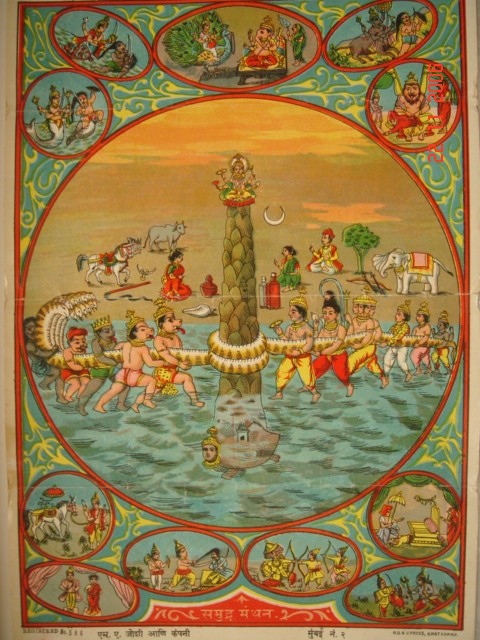The volcanic and primordial mountain connections of ancient sites
Published date: 29-04-2018
This paper captures my own research into why they build pyramids worldwide and how these structures / temples are related to each other. This paper tries to understand why a whole world started building similar structures, ignoring the obvious answer of “its the easiest way to build a tall building” and “these cultures are not related”.
The author started looking for a possible deeper meaning behind this worldwide phenomena.
It starts with a first clue, pyra-mid, which translates as fire in the middle. Ben ben was symbolic for “primeval mound” This paper was initiated after the author saw a picture of the Cholula pyramid in mexico, known as the largest meso american pyramid, with the volcano in the backdrop.
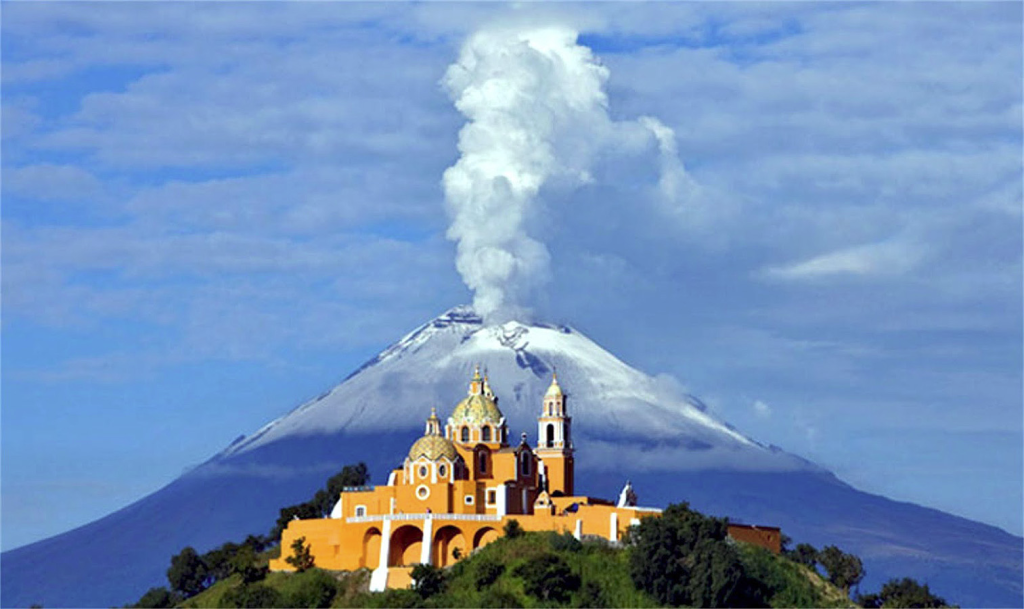
The word PYRAMID
According to Stephen Mehler, the word pyramid has this origin
“The word pyramid is derived from the Greek words PYRAMIS and PYRAMIDOS. The meaning of the word Pryamis is obscure and may relate to the shape of a pyramid. The word Pyramidos has been translated as “Fire In The Middle”. In alignment with the indigenous tradition, we use the interpretation “House of Nature, House of Energy” for Per-Neter.”
We know the ancients revered the primordial mountain as per Egyptian religion. The “mountain” re-occurs in many religions worldwide.
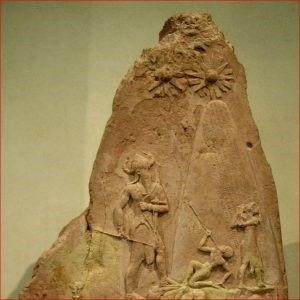
Quote: “It was given different names in different cultures. The Egyptians knew it as the Primordial Mound, the Israelites as Sinai and Zion, and the Greeks as Olympus and Parnassus. Further afield, the Indians called the divine peak Meru or Sumeru, the Chinese Kun-lun, Sung-shan, or Bu-zhou, the Icelanders Himinbjörg, the Aztec Colhuacan, and the Choctaw Nunne Chaha.”
Source: https://www.thunderbolts.info/tpod/2005/arch05/050510mountaingods.htm

Hi there, I appreciate you reading my blog! 👀
The information presented here is free to read, with no ads. If you like this content, please consider supporting my writing by clicking on the link to become a member at Patreon Instead of a monthly recurring Patreon membership, you can also make a once off donation via Paypal or subscribe to my Youtube channel or follow me on X. 👇🏻
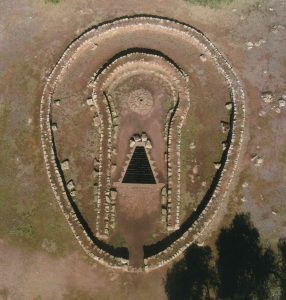
I always wondered to the surrounding rings but think it is starting to make sense. Also not the “not perfect pyramid” shape like the largest Egyptian pyramid. Could it actually be a depiction of a volcano?
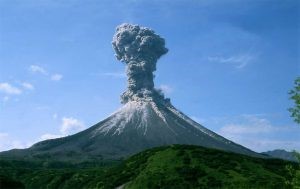
Cambodia
Many Asian temples are in a moat, like an island. For example Angkor Wat with a mountain like building as temple. The Vimana of Hindu temples representing mount Meru. This is the primordial sea. It is noteworthy that there is also a “moat” around the great pyramid, although this is not a feature on all pyramids and temples.
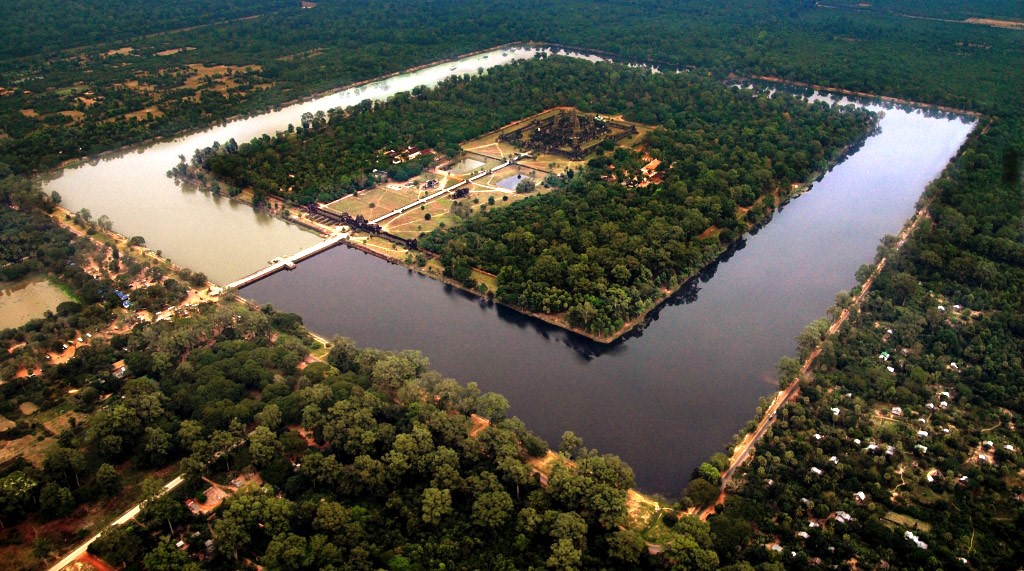
Angkor Wat the largest religious sites in the world is modelled after the primordial mountain, mount Meru (with its 5 peaks), complete with its snake bridges pulling Vasuki around it by the demons and gods. Churning the “milky ocean” a metaphore for the milkyway.
The mountain is also where the stars and constellations pass by. Hence “the gods live on the mountain” as constellations. Shiva Nataraja as Orion, but also all the greek gods as constellations on mount Olympus.
The 5 peaks, possibly symbolizing the 5 continents. It could also be the center of the milkyway, an astronomical reference with the demons and gods “puling the cosmic snake”, draco or the milky way, winter and summer, identical to the snake surrounding the cosmic egg, which has the same meaning as the cosmic mountain.
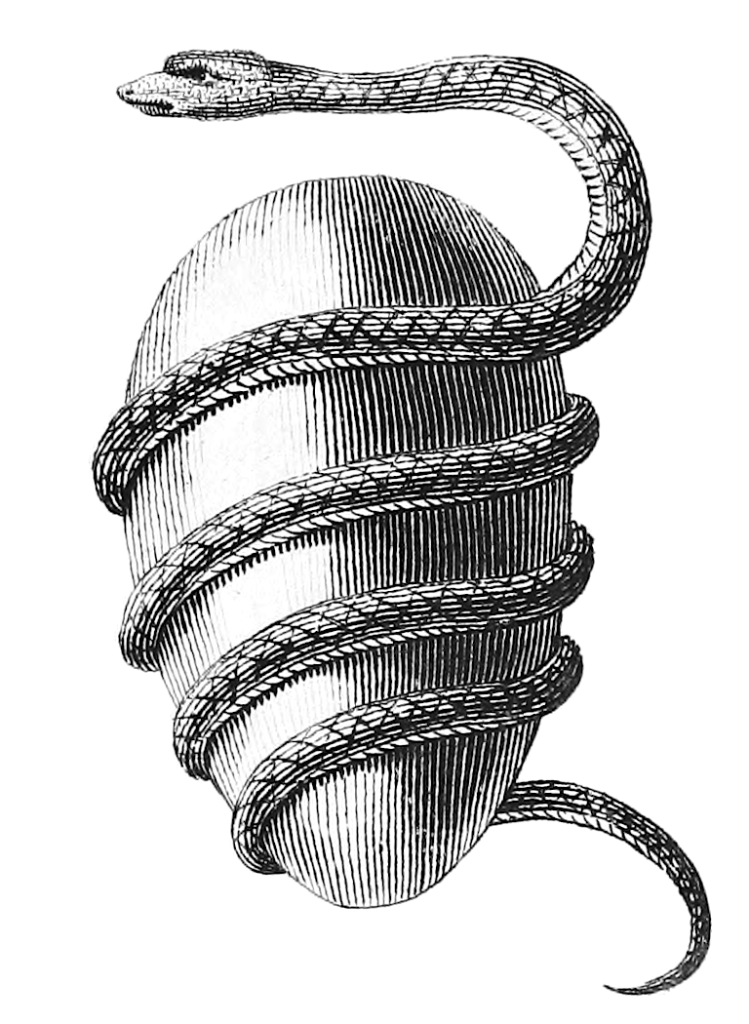
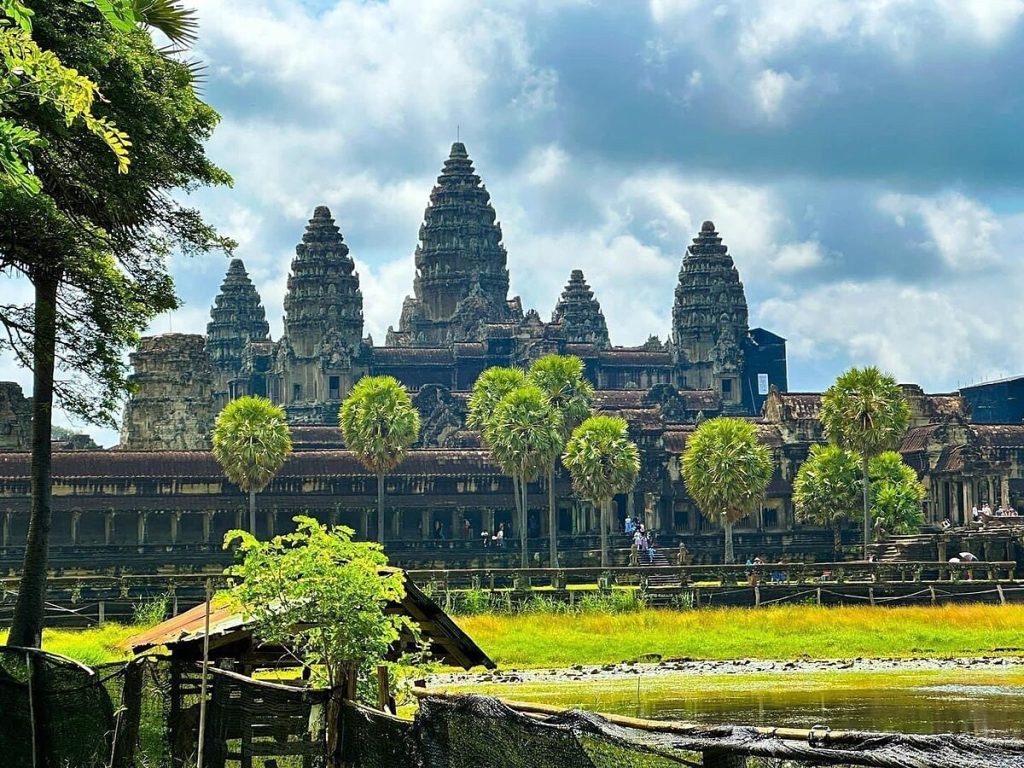
” There is one very important link researchers and academics worldwide might have missed, which is, the relation to the volcano. The pyramid, temples, temple mounts and platforms are linked and aligned to volcanoes”
Why Volcanoes? The primordial mount? The joining of alchemical fire and water to create new land, or a possible destruction and deluge by volcanoes that is commemorated with pyramids as cenotaphs or monuments to such a deluge?
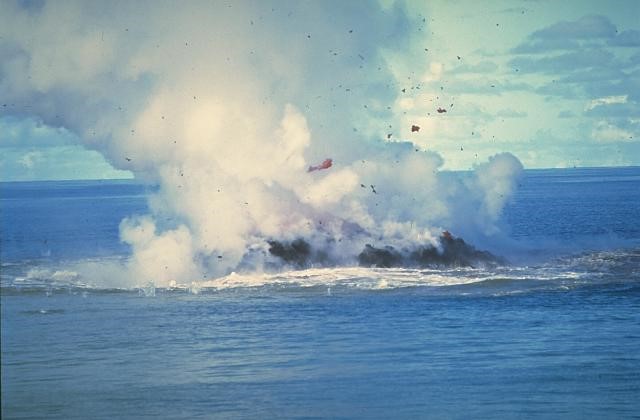
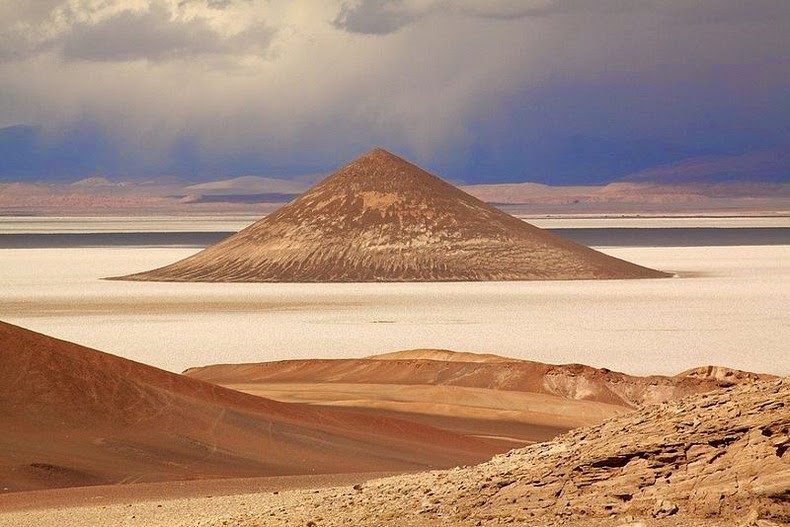
Cono de Arita is a volcanic cone that rises unexpectedly in the middle of the salt pan, near the border of Salar de Arizaro, in Argentina
So can we prove pyramids (or temples) are related to volcanoes?
Not only is the pyramid a representation of that primordial mount that rises from the sea, water and fire combined, it is also directly related to some of the world largest pyra-mids, so obvious in plane sight as a background to the building but not explicitly mentioned as related to it, as far as I know by anyone. Not in relation to this subject in Meso America and also not in a global relation in different countries worldwide like Bali that it was the volcano that caused the temple or pyramid to be build.
Some pyramids and temples are directly positioned on or near such volcanoes making it a small copy of the large mountain behind it as seen in Mexico AND Bali, an ocean apart, with no cultural links whatsoever according to conventional academic research.
Was it mere coincidence they both framed the volcano? I suspect not.
Mexico
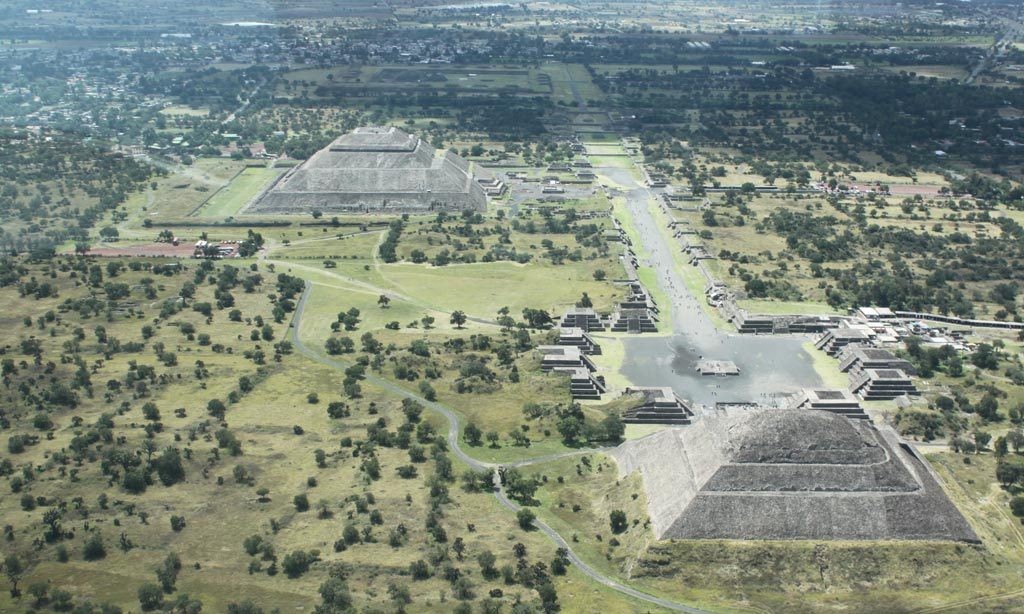
The Aztecs gave the name Miccaotli Street of the Dead or Calzada de los Muertos in Spanish) to the broad, street-like series of connected plazas in Teotihuacan.
The main buildings are connected by a 130-foot- (40-metre-) wide road, the Street of the Dead (“Calle de los Muertos”), that stretches 1.5 miles (2.4 km); oriented slightly east of true north.
It points directly at the nearby sacred peak of Cerro Gordo, not any mountain, again a volcano..
The Street of the Dead was once erroneously thought to have been lined with tombs, but the low buildings that flank it probably were palace residences.
I do not think the pyramids are the pyramids of the sun and moon. I think they represents the two large volcano’s south-west of Mexico city and that the reason is that the street of the death connects to 1 pyramid is exactly that. Because the volcanoes caused massive death to a pre-civilization.
https://en.wikipedia.org/wiki/Popocat%C3%A9petl
https://en.wikipedia.org/wiki/Iztaccihuatl
I noticed that the old Toltec city of Tula was on the other side of Mexico city much closer to the volcano’s and that the newer cities are deliberately further on the other side.
Could Teotihuacan and Cholula be cities that came from Tula
that was abandoned and destroyed by volcanic erruptions?
Is that the true meaning of the pyramid shape? Is that the reason why they mimicked the two mountains as pyramids in Theotihuacan and linked the street of the death directly to 1 pyramid. Let’s carry on to the largest pyramid in Mexico, where the catholic church build a church on top. Check what is behind it..
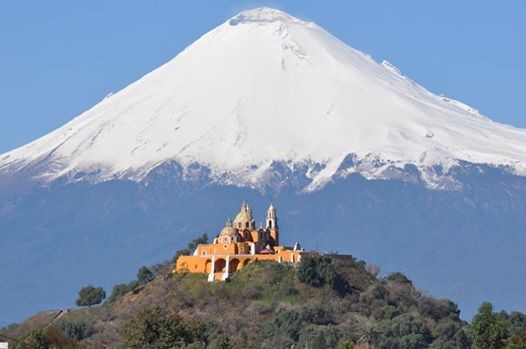
Perhaps this picture shows it better.. That’s right, a massive volcano. Perfectly framed by the pyramid.
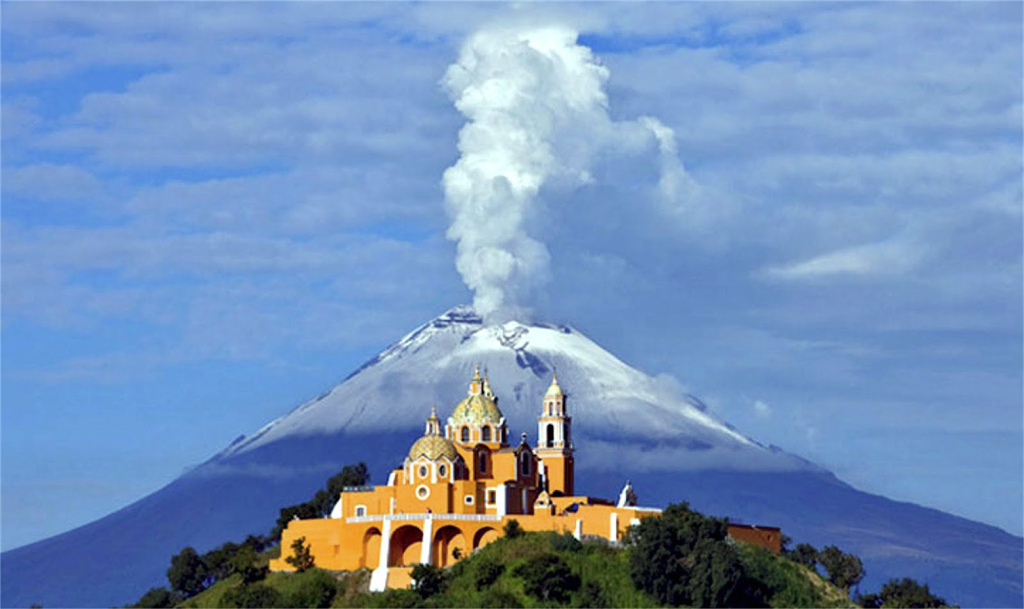
The great pyramid of Cholula, with as backdrop the volcano it replicates.
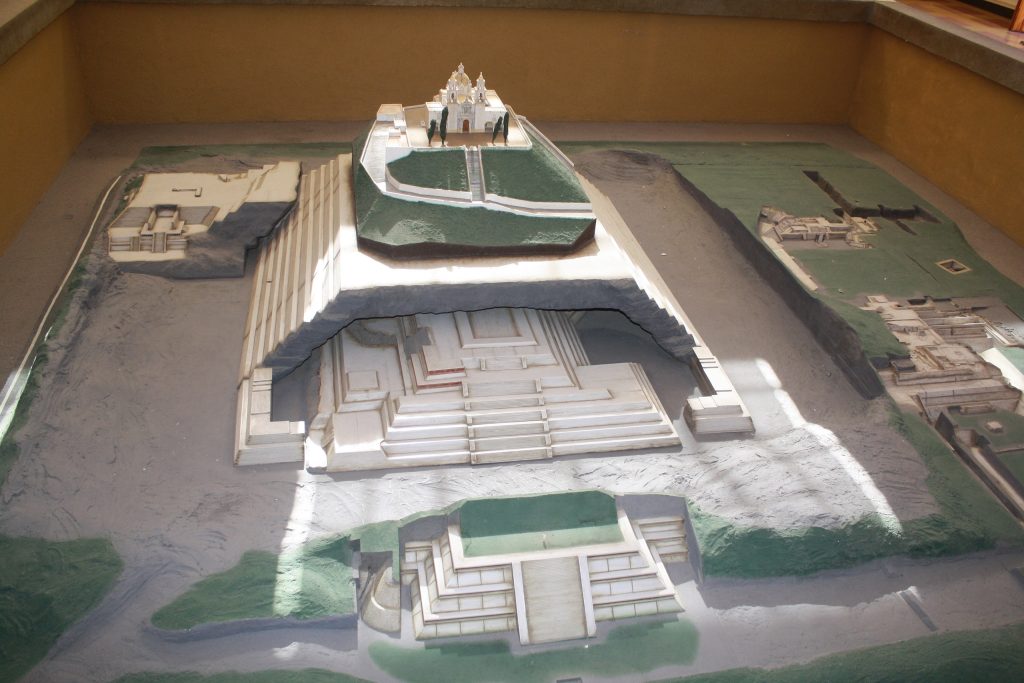
The great pyramid of Cholula, Mexico
Another weird find is this. A man made mini volcano. Named “el Volcan”
Quote: “In the 1960s, archaeologists had noted the volcano-like mound and identified it as artificial, but Benfer and his team decided to investigate further.”
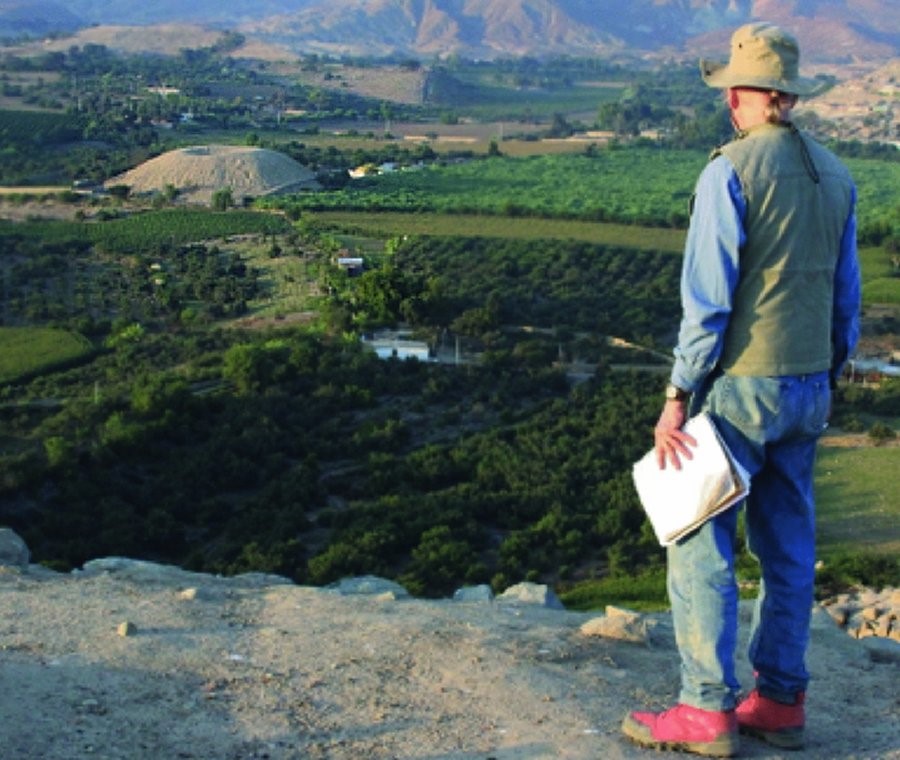
https://www.livescience.com/59544-mysterious-volcano-shaped-pyramid-in-peru.html
Izapa is just another example where the site perfectly aligns to a nearby volcano.
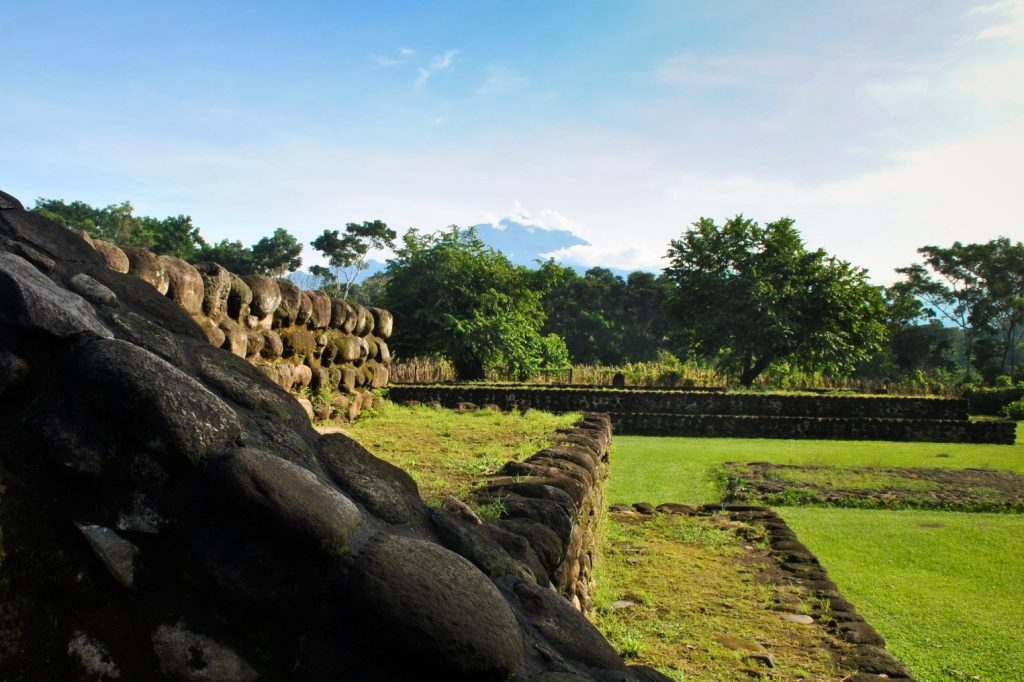
Izapa is laid out just east of true north; the exact alignment is 21 degrees east of north. [1] It is aligned with the volcano Tacaná and also seems to be situated to the December solstice horizon. [2]
[1] Source: https://en.wikipedia.org/wiki/Izapa
[2] Rice, Prudence M., Maya Calendar Origins: Monuments, Mythistory, and the Materialization of Time. Austin, TX: University of Texas Press, 2007 ISBN 0292774494 p. 109
More reading on Izapa:
http://mundomaya.travel/en/arqueologia/top-10/item/izapa.html
http://www.cruiseportinsider.com/pcex04.html
Bali
The reason for Balis’ temples on the slope of volcanoes or Cholula in front of volcano pre-dates Hinduism and relates to the core of the pyramid culture.
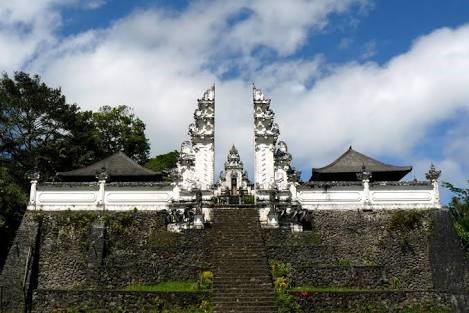
Lempuyang Temple, Bali
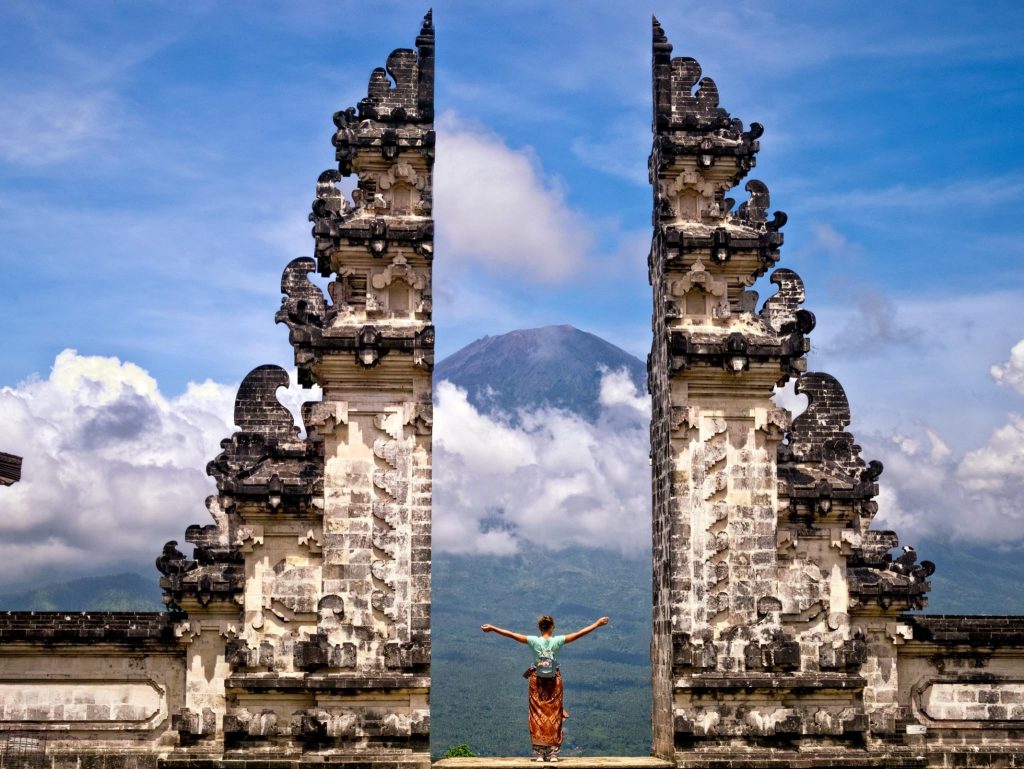
Mother Temple gate in Besakih is on the slopes of volcano Mount Agung .
Here the gate of Pura lempuyang temple in Bali. Again a volcano is framed perfectly in its view, identical to the Cholula Pyramid in Meso America. Mount Agung or Gunung Agung is a volcano in Bali, Indonesia, south-east of Mt Batur volcano, also in Bali. Gunung Agung strato volcano is the highest point on Bali.
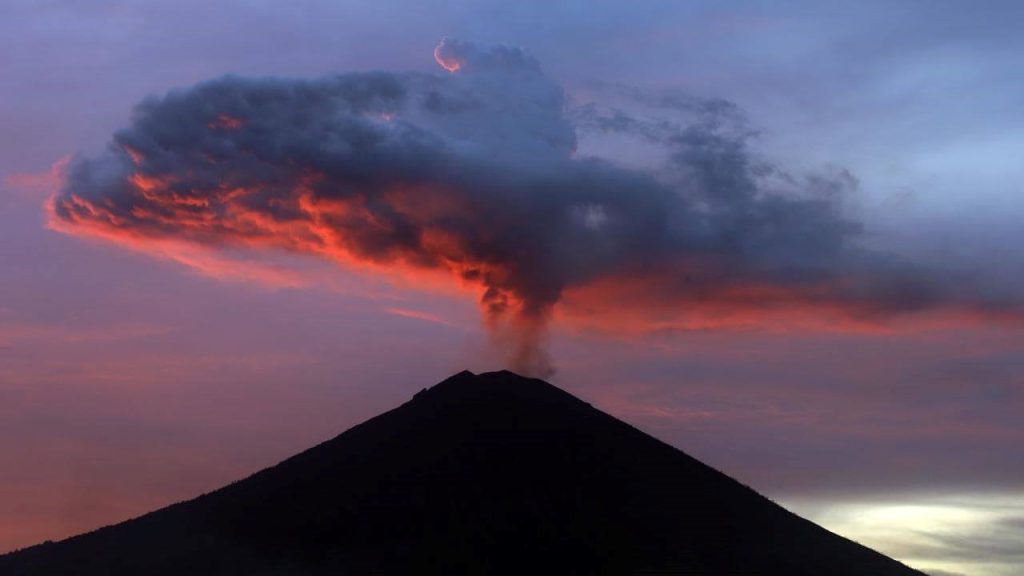
View of Angung volcano Last eruption: 21 November 2017
Elevation: 3,031 m
Prominence: 3,031 m
Translation: Paramount, The Great Mountain
The most important temple on Bali, Pura Besakih, is located high on the slopes of Gunung Agung volcano.
There are a few other temples in Java and most are build on the sloped of volcanos as well, example Candi Sukuh.
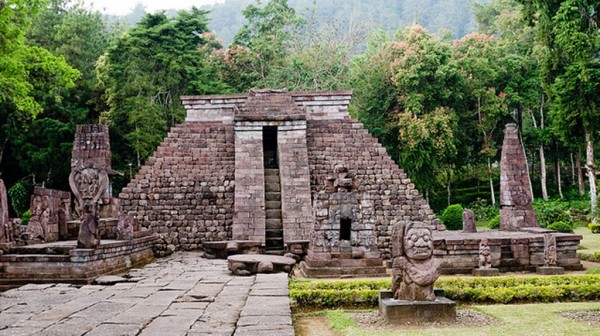
Java, Gunang Padang
The site in west Java, alligns with the stratovolcano in the background, now obscured by a large tree, which is hardly mentioned by anyone, who are to busy with the focus on the site itself. It is build from volcanic basalt blocks.
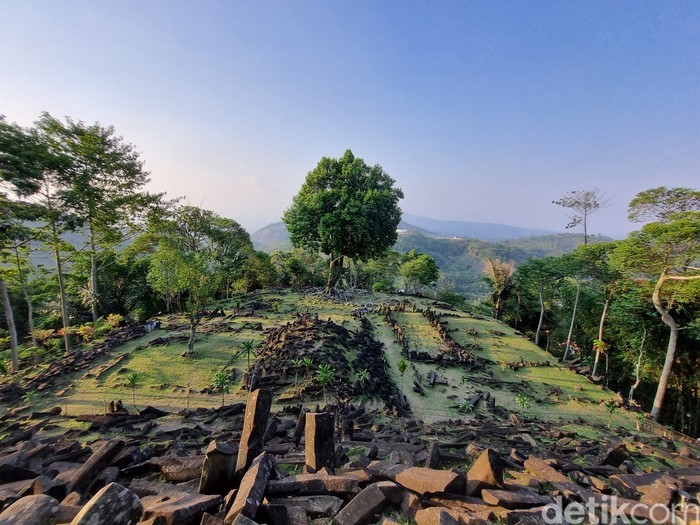
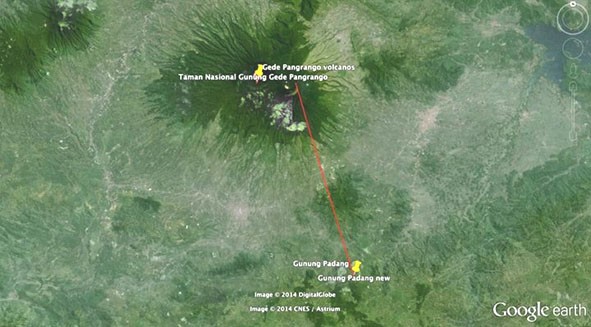
The observation of such a alignment, was mentioned by Andrew Collins in one of his articles.
Source: https://www.andrewcollins.com/page/articles/gp.htm
Quote: “If all this is correct it does suggest that Gunung Padang’s megalithic builders saw the stratovolcano as central to their beliefs and practices, and constructed a viewing platform of andesitic pillars in order to watch it from a safe distance of around 15 miles. So the question arises: why focus your attentions on a volcano?”
Crete
Little people know that the bullshorns, Horns of consecration at minos palace align with a specific mountain, mount Juktas (https://en.wikipedia.org/wiki/Mount_Juktas) in the background known as Zeus mountain. Not a volcano, but definetely an intended mountain allignment. Now also obscured by trees.
Quote: “This was believed to be the entrance to the underworld, atop Juktas, framed between the horns of consecration. The earth holds the underworld which is a passage from the human world to the divine. Hence, the importance of the horns of consecration lays not in the horns themselves but the mountain between them.” Source: https://scholarexchange.furman.edu/art231/23/#:~:text=This%20was%20believed%20to%20be,but%20the%20mountain%20between%20them.
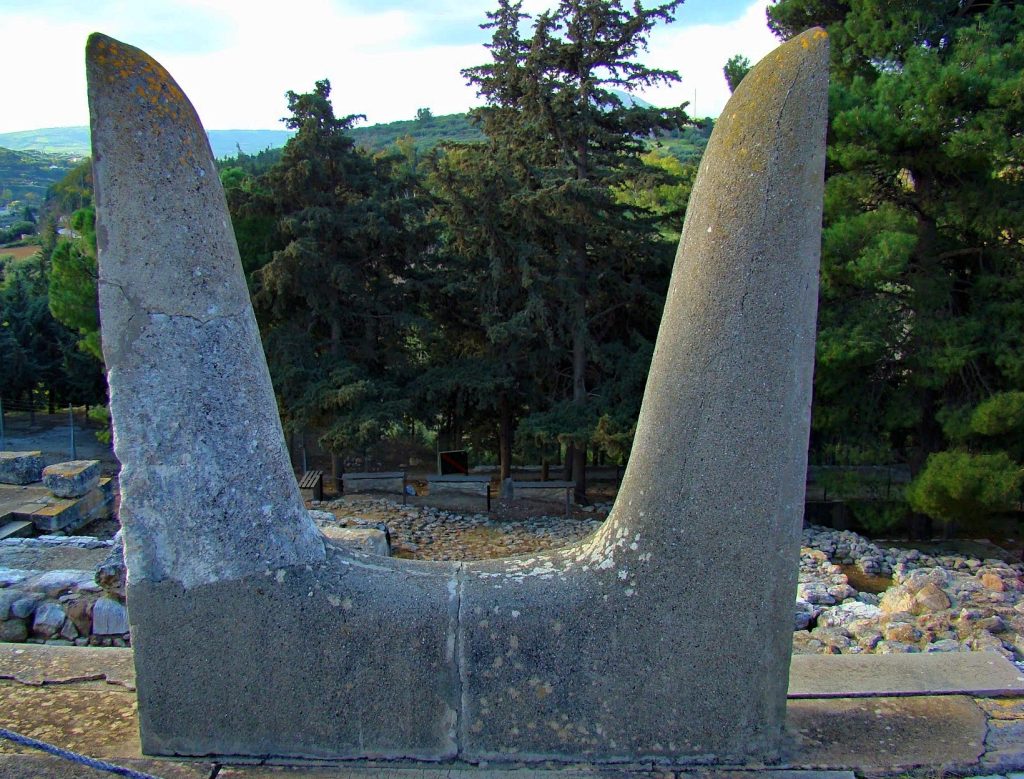
Egypt

Egypt has no volcanoes. Correct. But it is no secret Egypt God Ptah was an earlier form of Hephaestus or Vulcan, again the volcano link is obvious. Also the Egyptian word for pyramid is Mr. Very close to Meru and there is the Nubian Meroe civilization. Then there is the stories in Egypt of creator gods and their primordial mountain.
We can see similar cultural links between temples, pyramids since these cultures are not related according to academic scholars and “just the easiest way to build a tall structure”
The answer to why pyramids where build, besides, tombs for Pharaohs was never given. The author thinks it goes a bit deeper then this and attempted to explain the sphinx and the pyramids, in this blog article.
Easter Island
It also might be represented by the statues on Easter Island, deliberately placed on a volcanic island to symbolize the destruction of mankind as a warning to the future, intended to be buried by the volcanic ash as a massive memorial and message to future mankind. Massive amounts of soil are covering the huge statues.
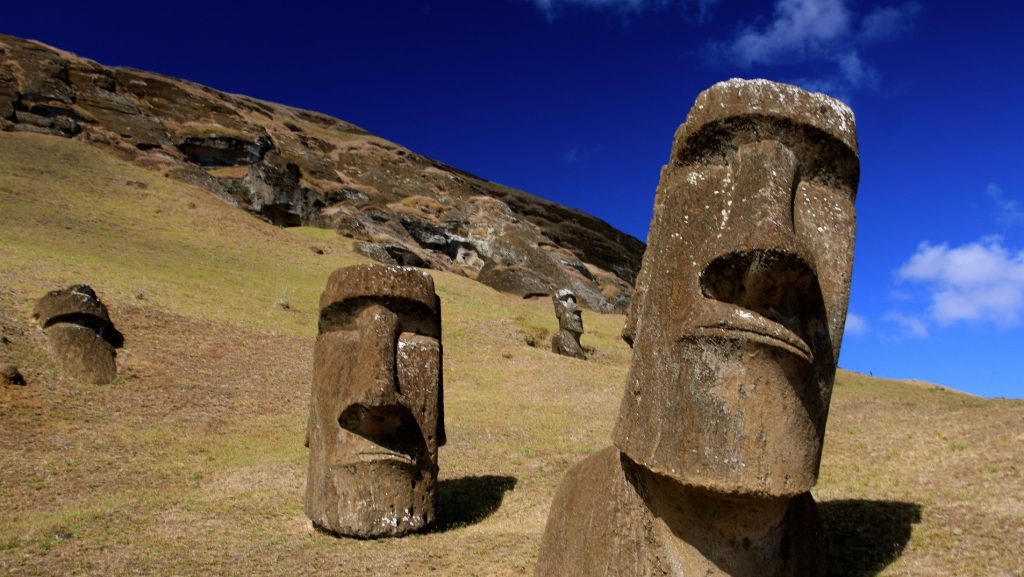
Researchers have found charcoal in the peat suggesting the islands vegetation was burned by its residents, I suspect the volcanoes actually did this (and buried the statues) and the statues where intentionally placed on a volcanic island in the pacific as a memorial to a deluge volcanic destruction. Further dating when the statues where placed and by whom and why there are megalithic walls similar to those in south America needs to be done by archaeologist. If we know the statues are so large, how deep does that wall go?
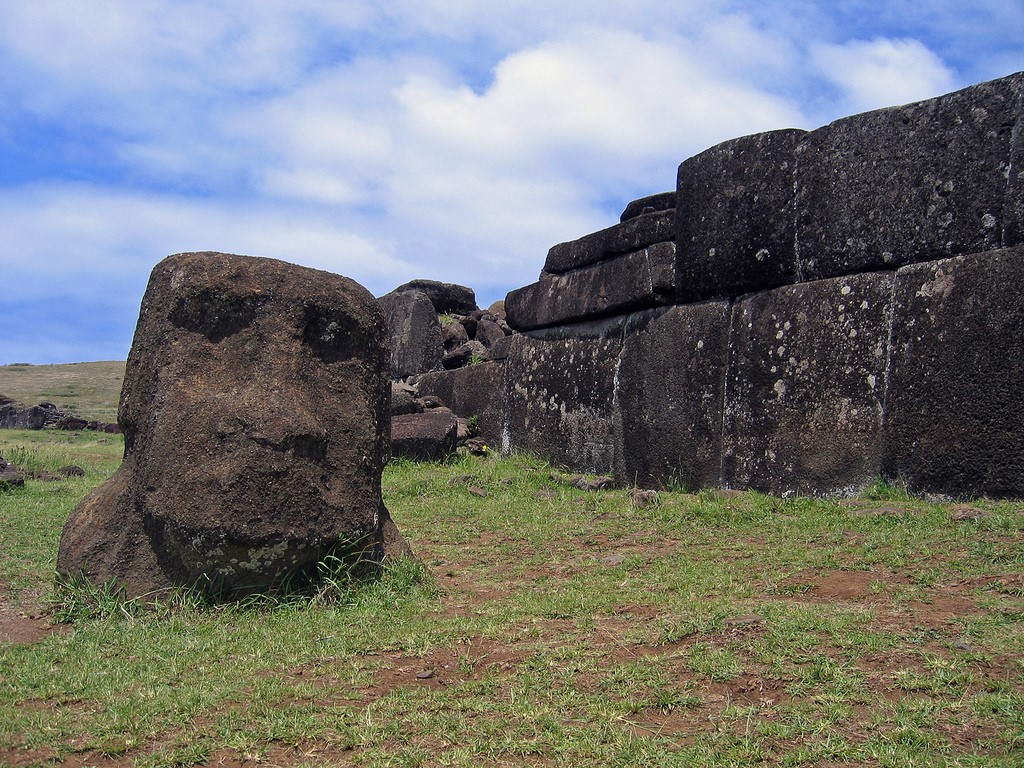
How deep does that wall go since the moais are so large?
This would be the first place to excavate to investigate that wall and how deep it goes.
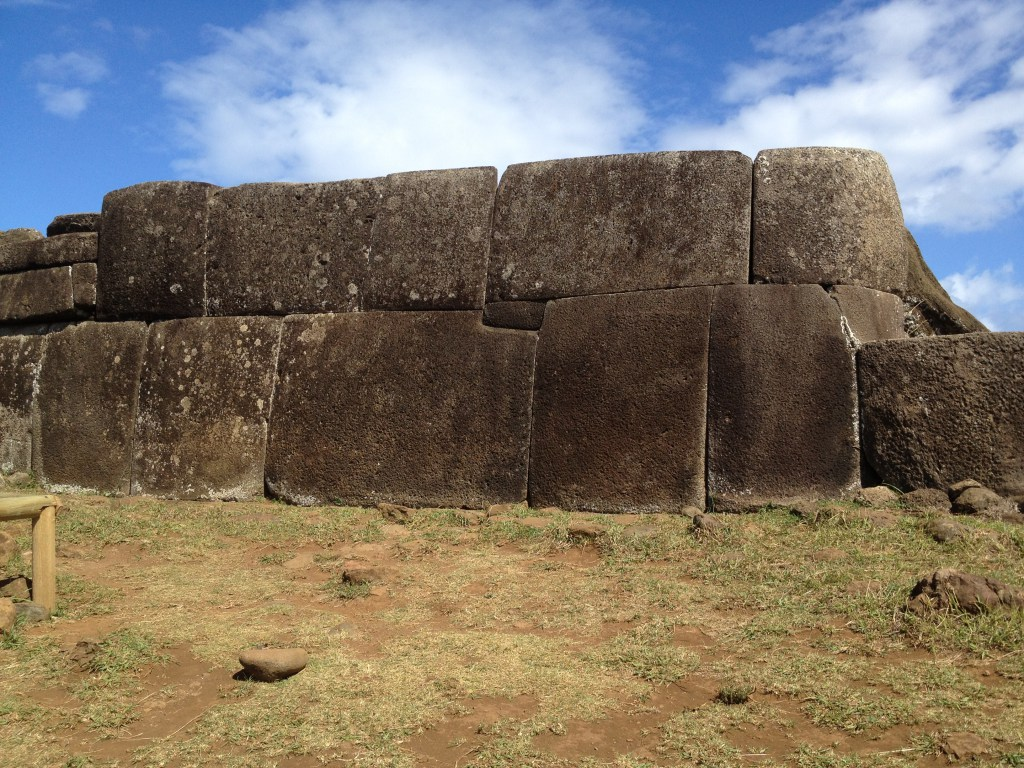
Thor Heyerdale also found more walls on Easter Island.
And if statues are covered so deep under sand/ ash what more lies hidden on this island and where these statues intentionally so large to be able to withstand numerous eruptions before fully covered as a message to future mankind? Why did they not dig at the wall to see how deep it goes since only a head of a Moai sticks out there as well?
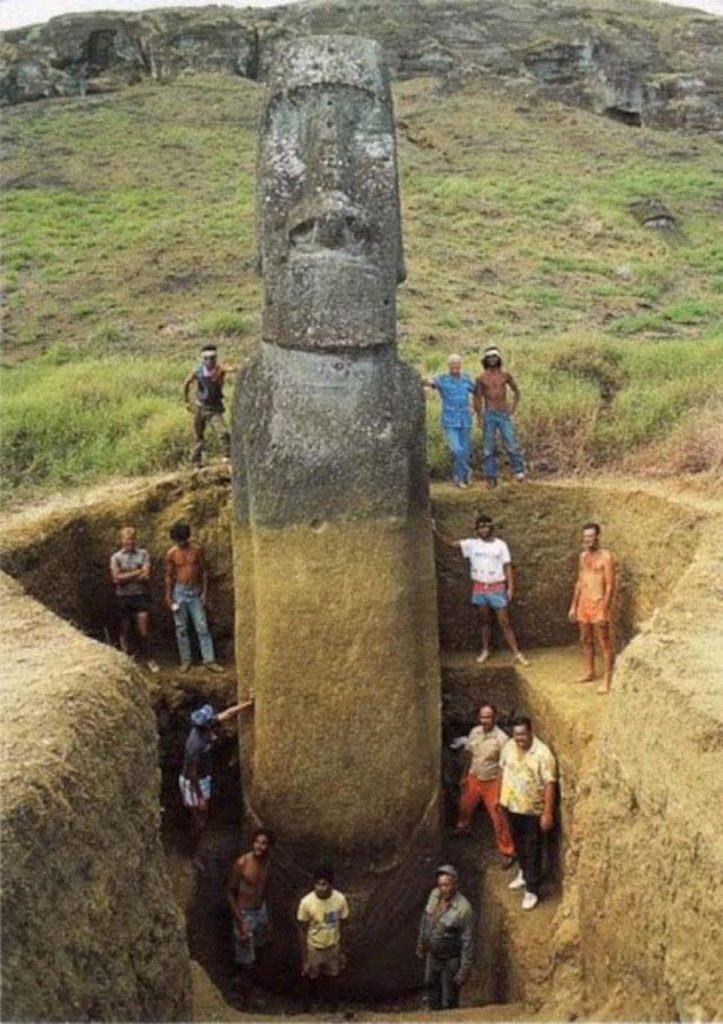
How long does it take to cover these statues so deep in soil. How many eruptions of the 3 nearby volcanoes or tsunamis? This should be easily answered if we see in which direction the statues have fallen, if it was eruptions or tsunami’s. In any case, The depth of the soil is huge, so what else is hidden on Easter Island..
Monuments rather than tombs or symbolic tombs warning future mankind of the worldwide catastrophe that killed so many. Hence perhaps Pyramids where never tombs yet symbolic tombs and a pending warning to mankind and Easter Island was also such a memorial to testify to such a deluge.
This is is my opinion the true reason why pyramids where build worldwide. Combined with later astronomy to mark a time in man’s history many thousands of years ago.
Obsidian, cinnabar are all related to volcanoes as their pyramids and early gods where.
What if the pyramid was a memorial, a symbolic Tomb of millions, due to worldwide volcanic eruptions, tsunamis and a total blackout of the skies combined with a scorching hole in the ozone layer in a downwards spiral effect. Is this why there are no mummies ever found in old pyramids as they where merely a symbolic “tomb” or memorial in the beginning.
Further more astronomy was practiced, the priest dressed in bird feathers on top of pyramids sacrificing people could be an enactment of either their sky god bird / vulture / eagle Vega, killing people. Together with the volcano symbolism or being an re-enactment of their maize god constellation being “sacrificed” on top of the mountain. There is no difference to the Olympian gods on the mountain.
An interesting fact is that the mountain where Noahs’ arks landed, mount Ararat is also a twin peak strato volcano. The story of Noah was plagiarized by the church from older Sumerian and Indian accounts. (flood of Gilgamesh, flood of Manu,Utnapishtim etc https://en.wikipedia.org/wiki/Flood_myth)
However it does shows a link between a volcano and a flood story. Again two volcanic mountains that look like natural pyramids.
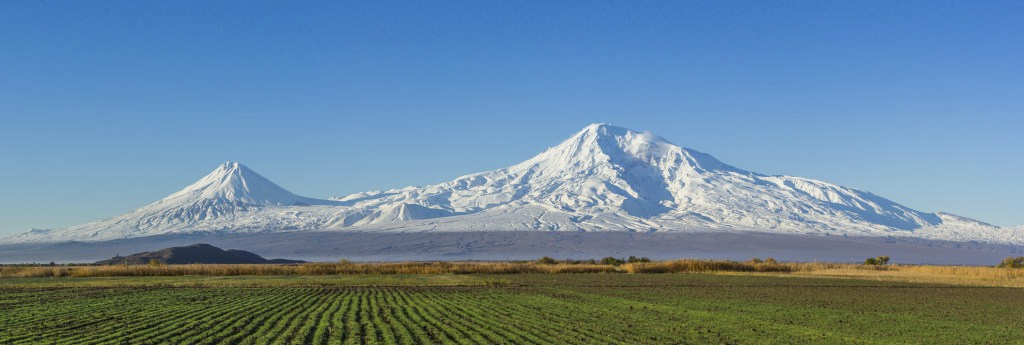
Mount Ararat and the Araratian plain, seen early morning from near the city of Artashat in Armenia. On the center left can be seen the historic Khor Virap monastery.
The link of pyramids to the volcanoes as memorials to volcanic eruptions that created a deluge has, as far as I know never been published in this context and deserves further research.
A recent article on national geographic did point out also that pyramids could have been modelled to volcanoes.
Quote: In general, Sheets said, volcanism was an integral part of ancient Maya life. Some of the temples in the highland Maya cities, for example, mimic sacred volcanoes. “The temple buildings have doorways in the tops, where they burned incense, and the rising smoke was used to carry various messages to ancestor spirits and the deities,” Sheets explained. But whether temples at Tikal—where no volcanoes were visible—and other lowland cities were similarly inspired is unclear.Volcanic eruptions also fit into the Maya worldview that life is full of phenomena that can be either hazards or opportunities, and that human behavior can tip the balance, Sheets said. For the Maya, a smoking volcano wasn’t always a harbinger of doom. Humans could turn its ash into a benefit, such as fertilizer or additives to strengthen pottery clay. Study leader Tankersley emphasizes that the unpredictable mountains, too, were at the crux of Maya culture. “They built temples in the shapes of volcanoes, and their ceremonies replicate volcanic events,” he said.
“To the Maya, volcanoes were part of life—an essential part of their life.”
Source: https://news.nationalgeographic.com/news/2011/04/110414-maya-volcanoes-eruptions-ash-tikal-science-volcanic/
One could question if this was only for the Maya, or also for the Balinese, the Egyptians and many other cultures and if this cultural aspect of the volcano was related to a worldwide cataclysmic event instead that made them build pyramids modeled after volcanoes all over the world.
Teoberto Maler was an Austrian-born photographer and archaeologist who discovered and photographed a frieze on the main Mayan temple at Tikal, in the Yucatan peninsula of Mexico, which appeared to depict a drowning man and another escaping from sinking land in a boat, while a volcano erupts in the background. Maler was convinced that this was an illustration of the destruction of Atlantis. Unfortunately, he had the frieze removed to the Berlin Museum where it was destroyed in the bombing of World War II.
In 1939, Robert Stacy-Judd included a photo of the frieze in the book “Atlantis mother of all empires”
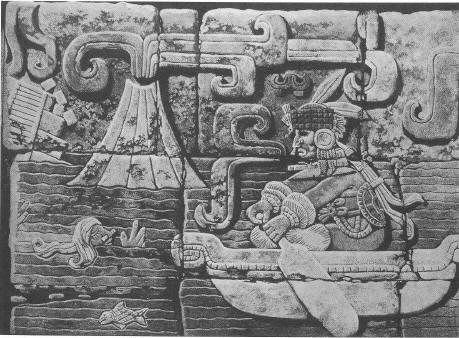
Source: http://atlantipedia.ie/samples/maler-teobert/
This, combined with the other evidence presented and links to volcanoes, might be worth further research and considering the link between volcanoes and pyramids as a deep rooted message to future mankind that was the basis for a cult that came after such a deluge and might have been the basis for a global pyramid and temple mount culture. It is at least notable that all of these cultures had a veneration and links to volcanos.
If you liked this research article please consider supporting the author, by scrolling down for various options, on the main page or sharing a link to this blog post or blog www.isutrikanda.com on your social media so others can also read it. You can also follow me on X @stijnvdhoven Thank you!





